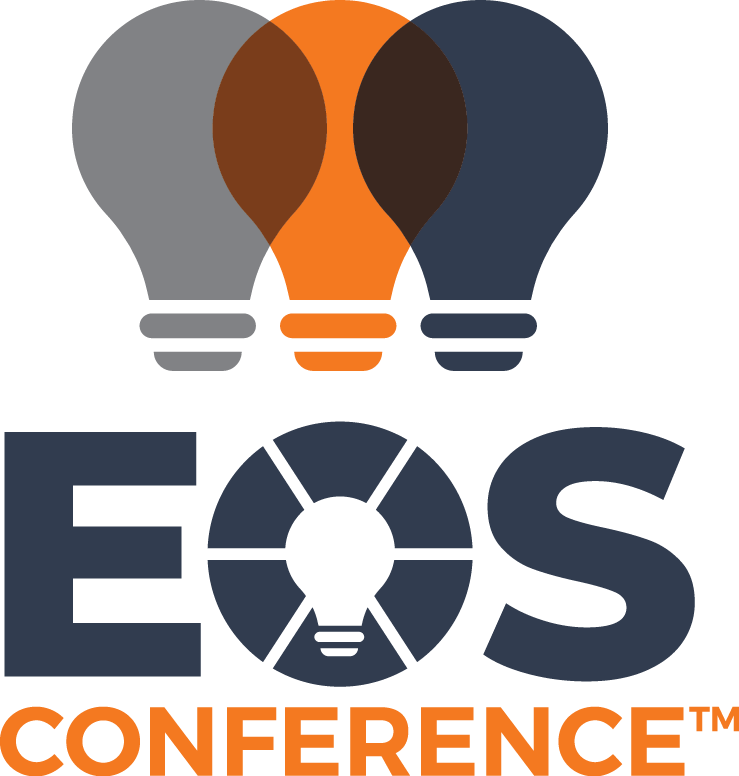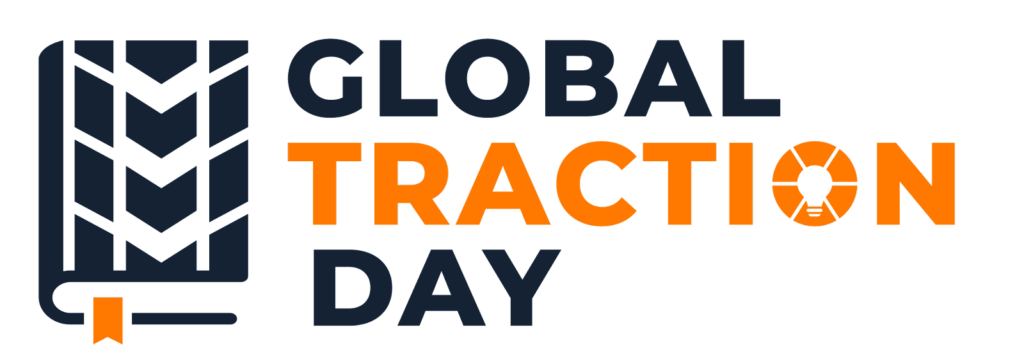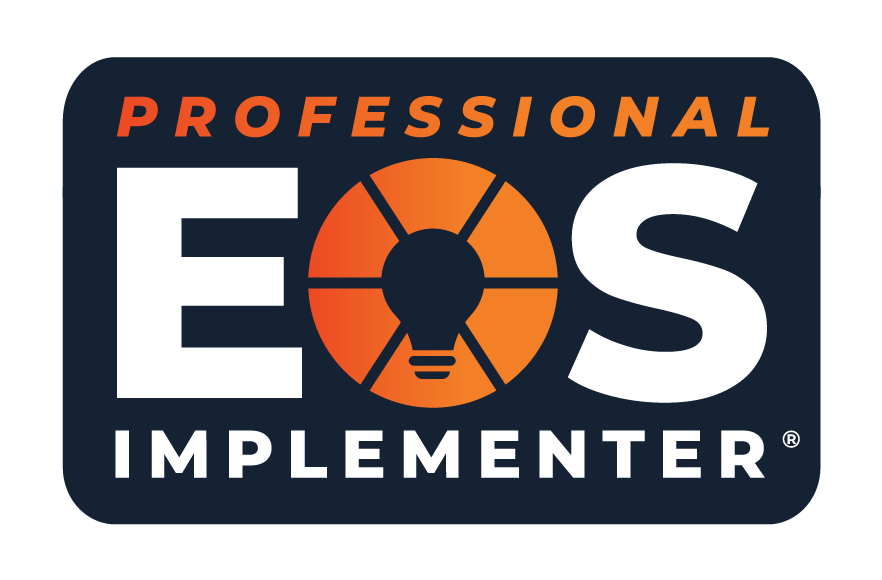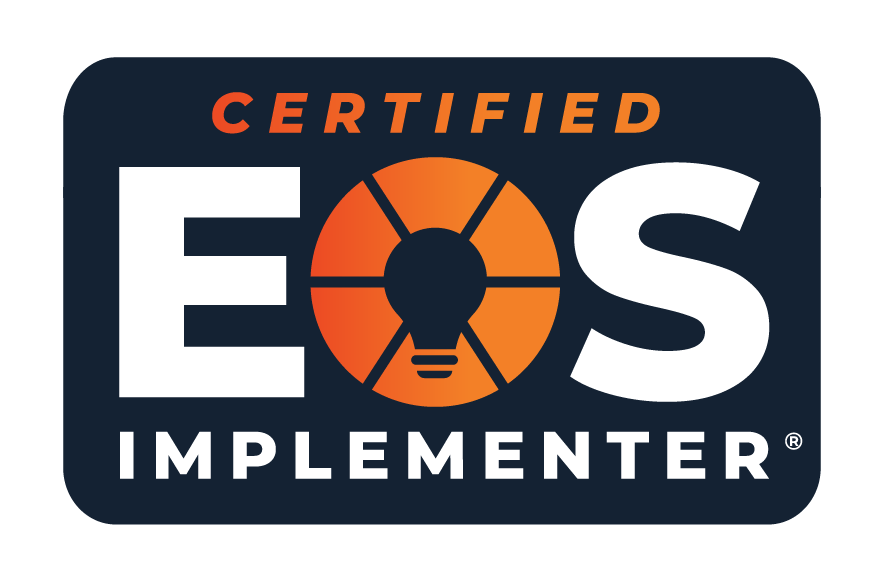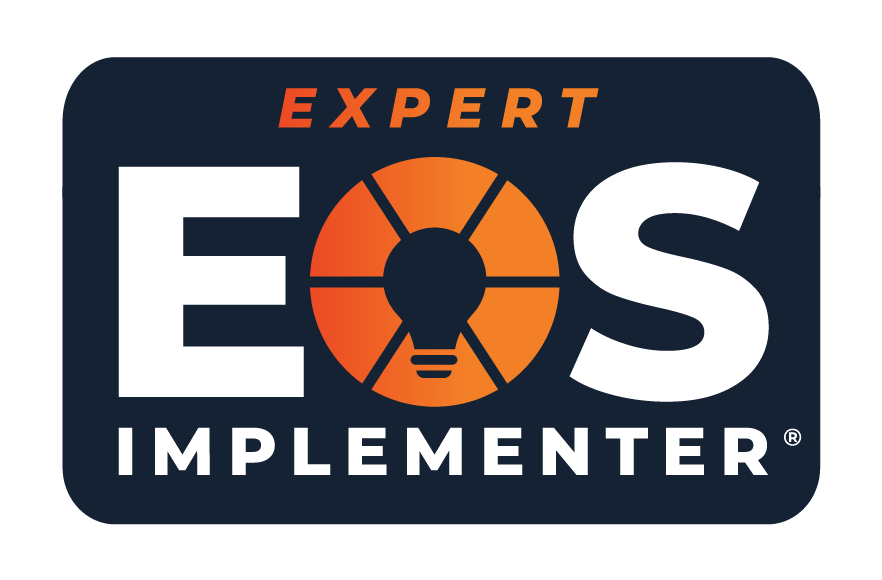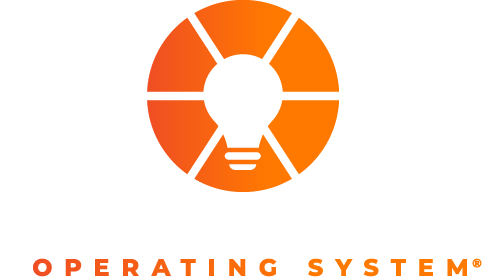
EOS Worldwide Trademark and Brand Compliance Public Guidelines
Background and Guiding Principles:
We want the world to know about and appreciate the value of EOS. We also want our community and others to share knowledge and experiences, to spread the word. But we want to make sure doing so does not mislead or confuse the marketplace, or inappropriately exploit our valuable brand assets and goodwill.
We have therefore created these EOS Worldwide Trademark and Brand Compliance Guidelines (these “Guidelines”) to help clarify proper usage of our brand assets. While we tried to make these Guidelines simple, in actuality, the rules around intellectual property law can get pretty complicated. So we are here to help you navigate around all of the ins and outs of EOS.
EOS Worldwide’s brand assets—including the EOS Worldwide Global IP Portfolio Trademarks (as updated from time to time), logos, icons, designs, color scheme, trade dress, fonts, names of EOS Worldwide software, products, services, emojis, and any other brand features and elements, whether registered or unregistered (“EOS Brand Assets”)—are proprietary assets owned exclusively by EOS Worldwide, LLC.
Examples of uses governed by these Guidelines:
- Using a badge in your email signature or social media profile
- Posting a designation on your own social networks, such as LinkedIn
- Using a logo or badge on any website or within promotional materials (spoiler alert: logos always require a license)
- Using EOS brand trademarks or terms in articles, blogs, podcasts, or books (which may require approval from us)
- Using EOS tools in your own businesses
For those who know us and those who are new here, at EOS Worldwide, we embrace an abundance mindset, focusing on opportunities to build and share wealth, knowledge, and relationships. With laser focus, we approach challenges relationally with optimism and a ‘help first’ attitude.
That said, we value our EOS Brand Assets, intellectual property rights, and how they are used in the marketplace. It is crucial to maintain consistency with our brands. That means giving proper credit and making sure that you avoid misrepresenting your relationship with EOS. We are committed to protecting our brand, our communities, and the public, and will take action when necessary to prevent unauthorized, misleading, or other improper use of our intellectual property and brand association. How we approach each challenge may depend on the circumstances and the level of cooperation we receive. While we may not address every instance of misuse out there, we will enforce our rights as necessary and appropriate.
With this in mind, we have established seven guiding principles around the use of our EOS Brand Assets and intellectual property. While discussed in greater detail below, if you follow these seven guiding principles, then you can feel confident that you’ll remain in good standing with EOS Worldwide regarding our intellectual property.
1. Take affirmative steps to avoid confusing or misleading your audience. The steps needed may depend on the circumstances. Try to view from the audience’s perspective and think:
- Does the message or use make it appear that I am affiliated in any way (that I am not) with EOS Worldwide?
- Does the message or use make it appear that I am the source of any EOS disciplines, tools, or content?
- You may reference EOS disciplines, tools, or content, but in a proper way. You may not make it appear any of the EOS Brand Assets or any other EOS property are yours or that you created them. The only approved source of EOS products and services is EOS Worldwide and its licensees.
- Does it appear my product or service is affiliated with or endorsed by EOS Worldwide?
- Do not commingle your products or services without a license to do so from EOS Worldwide. Your products and services should stand on their own.
- Including a statement as simple as “We are not affiliated with or endorsed by EOS Worldwide” is helpful, but it is also not a “Get out of Jail Free” card. This means you can’t just say whatever you want and expect a disclaimer or disclosure to justify your message.
Your current or former connection to EOS may also impact the steps required to avoid or minimize confusion. Implying any ongoing association or connection that does not exist is misleading.
2. Certain EOS Brand Assets are off-limits without a license. What is a license?
A license is written permission to use our intellectual property for a defined purpose, and within the parameters we agree to. If you are not sure whether you have a license to use any EOS Brand Assets, then you probably do not.
Generally, you can refer to EOS wordmarks to truthfully share information about your product or service, or to offer evaluations or critiques. This is usually permissible, even without a license, as long as customers and the public will not be confused into believing EOS is affiliated with or endorses your product or service.
However, use of any of our logos or our copyrighted materials, tools, product icons, badges, graphics, and designs can never be used without an expressly authorized license or written permission from EOS Worldwide.
It’s also important to understand that just because something is publicly available does not mean it is in the public domain. A common misconception is that if something is easily accessible online or in a book, it can be freely used by anyone. This is not the case. Without our proper authorization, using EOS Brand Assets could lead to legal consequences. So, always check before using any EOS Brand Assets to ensure you’re in compliance.
3. Teaching EOS disciplines, tools, and concepts can quickly get you into trouble. Your personal knowledge is yours and you can teach from your personal knowledge and experiences, but you CANNOT imply that you are at all associated with or endorsed by EOS Worldwide when you are not. Therefore, using any of our trademarks to promote your services is prohibited (e.g., EOS® Coach, EOS® Consultant, Traction® Expert, EOS® Software) without a license from EOS Worldwide.
Warning: There are plenty of business coaches that claim to be able to teach EOS. Yes, people are introduced to EOS in many different ways and through different journeys. Some have read the books from the Traction® Library, some have worked with or for businesses running on EOS and some may even be former Implementers. However, to be clear, only a current licensed EOS Implementer is authorized by EOS Worldwide to teach, facilitate, and coach EOS purely using all of our tools and resources and to promote themselves as an EOS Implementer or coach using our EOS Brand Assets. The trademark EOS Implementer® is one we especially value, so when the consuming public sees it, they know they are getting the name-brand services from the source.
4. Using, altering, or re-distributing EOS copyrighted materials and other EOS Brand Assets other than as expressly permitted by us will likely rise to a level of infringement. We allow members of EOS Academy to use certain EOS materials and tools for their own internal business purposes. In addition, we provide certain free tools that the public may use also for their own internal business purposes. These rights are provided by license and described within our Master Terms of Use.
But you need EOS Worldwide’s permission and a license before using any tools, content or other assets we make available to you for any other purposes. Simply adding attribution or citing back to EOS Worldwide does not give you permission to do whatever you want with our assets. For more information about your rights to use EOS Brand Assets, please see our EOS Worldwide Master Terms of Use.
5. When targeting EOS communities to use your product and service, you should adopt the mindset that your audience already knows EOS and that you do not have to teach them Entrepreneurial Operating System concepts, tools, or disciplines. If they do not, then you should direct them to eosworldwide.com to learn about running their business on EOS, and so they can better understand how your product and service may complement EOS.
By adopting this mindset, you can then focus on how your product or service may support them as a business running on EOS. But remember Principle #1, do not mislead or confuse!
6. Focus on your experiences with EOS. We want you to express yourselves and how EOS has impacted you along the way. Your experiences are yours, and that’s what you can and should speak or write about. Referencing EOS concepts, tools, and disciplines along the way can still be permissible, as long as it is incidental to the overall expression and does not mislead or confuse the audience, or include improper use of any EOS Brand Assets that may require a license from us (e.g., logos). Steer clear from deep-dive teachings into our tools, concepts, and disciplines, which likely will cross that line.
7. Do not be afraid to ask for help. We are here to help support you and can help you navigate the do’s and don’ts with the use of EOS Brand Assets. Contact us at [email protected].
And speak with your attorney and advisors. We are not re-writing the laws of intellectual property or fair use, we are just doing our best to protect the integrity around them and to minimize confusion in the marketplace.
EOS Trademarks
For a list of our trademark portfolio, please visit this link.
WHAT IS EOS®?
About the EOS Brand
The EOS Worldwide brand is a multi-faceted construct that reflects our purpose, values, and work to our community, clients, partners, and others. That construct is a combination of our words and the visual system we call our identity. The basic elements of that identity—logo, color, typography, and imagery—work together to create consistent recognition of our brand. Click HERE to learn more about who we are and what we do for businesses!
Our visual style is real, raw, and engaging, mixing together photographic elements with simple illustrations, textures, and overlays. We will always keep it intuitive and simple. When it comes to our content, website, systems, processes, and people, less is more.
The Why of the Logo
As a global community, we need the EOS® brand to speak clearly, consistently, and with deep relevance to our key stakeholders. To whomever we’re talking—no matter who they are, what language they speak, or where they live—our brand needs to represent the universal benefit that EOS concepts, disciplines, and tools transform people and businesses. We’re passionate about making sure that our system is purely executed. We need to apply that same diligence to our brand.

WHAT ARE EOS BRAND ASSETS?
We are EOS Worldwide (or EOSW). EOS, Rocket Fuel, Great Boss, and EOS One are our core brands that deliver the products and services that are offered by EOS Worldwide. In providing our products and services, we have created and developed our EOS Brand Assets, which are proprietary assets owned exclusively by us, EOS Worldwide. EOS Brand Assets also include our EOS content which can be found in our EOS Academy, EOS books, Rocket Fuel University, our Great Boss workshops, throughout our digital platform including EOS One, and elsewhere.
Brand Assets
Logos
Events
EOS One
Badges
EOS Brand Asset usage dos and don’ts
To help with your understanding of what you can and cannot do with EOS Brand Assets, we created this non-exhaustive list of dos and don’ts.
We may supplement these public guidelines with more specific brand asset guidelines for certain users and communities. If you are a licensee or a member of our communities and are unsure if you have additional rights to use any of our EOS Brand Assets, please ask so that we can point you in the right direction.
As we continue to further develop our products and services, we will continue to supplement our branding guidelines, so please continue to check in for the latest guidelines applicable to your use of EOS Brand Assets.
Do's
Keep it simple, accurate and current
when referring to EOS and if applicable, your affiliation, within any marketing, social media profiles, email signature, or otherwise.
Use only designations you currently hold or if applicable, have earned.
Truthfully and Accurately
refer to EOS and its products and services, and your relationship with EOS.
Please fact-check and ensure you are using accurate information.
Spell and trademark
EOS trademarks exactly as they are shown in the trademarks list. Use the correct symbols provided.
Please reference
the full name of an EOS product or tool if you mention one in your promotional materials.
Properly attribute
all EOS concepts and terms to EOS Worldwide, and link to EOS Worldwide where appropriate without creating any confusion or otherwise misrepresenting as to an affiliation, connection, approval, endorsement, or association (or lack thereof) with or by EOS or EOS Worldwide, or the origin of the EOS Brand Assets.
If you are featuring or quoting an EOS Implementer or any other person, please be sure to give credit and to use the appropriate designation and company name when identifying them (e.g., Jane Doe, Certified EOS Implementer).
If your product, service, or solution is compatible or interoperable with EOS, you may truthfully state so within the text description about your tool.
Former Members
of our communities may identify their accomplishments or experiences with EOS, but please make sure you are accurate, truthful, and current.
Don'ts
In general, you must not use EOS’s Brand Assets in the following ways:
Don’t promote yourself or any products or services using any
EOS trademark terms without an express licensing arrangement in place with EOS Worldwide.
Don’t offer
any downloadable tools or files obtained from the EOS website as direct downloads from any article or post you create.
PLEASE LINK DIRECTLY TO THE “Free Tools” page on the EOS website.
Don’t abbreviate or alter
EOS trademark terms
Don’t refer to yourself as an EOS Implementer, EOS Coach, or any other designation
using our EOS trademarks unless expressly authorized to do so by EOS Worldwide. For example, don’t refer to yourself as an EOS Coach or a Traction Coach.
Don’t refer
to yourself as an “EOS Integrator”.
If you are the Integrator for ABC Company, we would expect you to refer to yourself as - “Integrator, ABC Company”, without the EOS trademark.
Don’t create any EOS designations
using any EOS trademarks that are not endorsed or created by EOS Worldwide.
Don’t use EOS registered/ trademarked
terms or any other EOS Brand Assets in your business name, business tagline, website domain (URL), subdomain, email address, social media account, logo, favicon, or incorporate EOS logos or graphics into your business logo, without an express licensing arrangement in place with EOS Worldwide.
Don’t copy and/ or distribute
any audio, video, or any other EOS content including that found in books and eBooks, obtained through your access to an EOS training system, including EOS Academy, Rocket Fuel University or EOS One without an express licensing arrangement in place with EOS Worldwide.
Don’t use the EOS logo, EOS Model, EOS Process, or EOS Toolbox
images on your website or social profiles without an express licensing arrangement in place with EOS Worldwide.
Don’t write a book
featuring EOS or Rocket Fuel concepts or teachings (other than fair use as permitted by applicable law) without express permission from EOS Worldwide.
Don’t imply an affiliation, endorsement, sponsorship, or approval
with or by EOS unless expressly authorized in writing by EOS Worldwide.
Don’t use EOS’s trademarks
in the name of a user group, social media group, or other organization name without an express licensing arrangement in place with EOS Worldwide.
Don’t alter, distort, or misappropriate
EOS Brand Assets by combining those with other terms, misspellings, or incorporating them into a tagline or slogan, etc.
No offensive use:
your use may never be obscene, disparaging, defamatory, or libelous to EOS or any of its products or services.
Don’t use any EOS Brand Assets to facilitate, guide, coach or teach those outside your organization
through any part of the EOS Process without a license from EOS Worldwide (e.g., a franchise license as an EOS Implementer).
Don't file
an application or recordation to register terms or logos identical or confusingly similar to EOS Brand Assets.
Don’t commingle
your brand with EOS. Create your own brand! Use your own colors, images, logos, icons, and designs. Only use EOS trademarks as permitted and in accordance with your license from EOS Worldwide.
Contact EOS Worldwide ([email protected]) with any questions about how you can use EOS content or other EOS Brand Assets.
Use of EOS Copyrighted Content
EOS products and services—including images, text, tools, and software downloads (the “EOS content”)—are owned either by EOS Worldwide or by third parties who have granted EOS Worldwide permission to use the content. We may not own all articles and images appearing on our websites or within other EOS materials, and therefore we cannot grant you permission for content that is owned by third parties. Regardless, you may only copy, modify, distribute, display, license, or sell the content if you are granted explicit permission within a licensing arrangement that accompanies the EOS content.
Additional Guidelines for allowed uses
Use Trademark Notices
Please remember to use the appropriate ™ and ® symbols on terms trademarked and registered by EOS Worldwide – refer to our EOS trademarks for a list of commonly used trademarked terms. This page is updated regularly and may not be exhaustive, so please be sure to check the most current version.
Use full product name
If your permitted use includes references to an EOS product or service, please use the full name of the product or service.
Link methods
You may link to EOS content when appropriate by using a plain text link with words such as “Entrepreneurial Operating System” or “EOS” to http://www.eosworldwide.com.
Permitted by EOS Worldwide
Include the following statement: “Used with permission from EOS Worldwide” when appropriate.
Copyright Notices
You must reproduce our proprietary rights notices on any authorized copies of any EOS Content, in the same manner in which such notices were outlined in or on the original to ensure that any copyrighted materials you use are marked with the appropriate copyright notices specified by us.
You should never use any notices that conflict with, confuse, or negate the notices we provide or require.
Proper Attribution of EOS Brand Assets
Use of any EOS Brand Assets (to the extent permitted) should give proper acknowledgment to EOS Worldwide in a manner that does not create confusion or otherwise misrepresent as to any affiliation, connection, approval, endorsement, or association (or lack thereof) with or by EOS Worldwide or EOS, or the origin of the EOS Brand Assets. Include the trademark symbols on at least the first instance that a term is mentioned on a page or in a document.
Media And Promotion Guidelines
Today EOS® is a growing brand of successful entrepreneurs from a variety of backgrounds. While we are one brand, our EOS community consists not just of our EOS Worldwide corporate team, but thousands of entrepreneurs around the world who are passionate about teaching and living The EOS Life®. These include our EOS Implementers, our franchisees who teach, implement, and coach clients on EOS; those who implement EOS directly within their own organizations and may be members of our EOS Academy, and members of our Rocket Fuel community who attend or have graduated from our Rocket Fuel University, or our Rocket Fuel Integrator Masterclass, and have joined the Integrator Mastery Forum Community. But it does not end there. We cannot forget the thousands of businesses running their businesses on EOS each and every day, using the EOS Foundational Tools™ throughout their entire organization. And let’s also not forget our EOS Enthusiasts, those who simply have a passion for EOS and may use our free tools or just love EOS from reading EOS books from the Traction Library or from speaking with others.
Certain EOS Brand Assets are made available for current members of our EOS community, and certain approved partners. If you are not a current member of our EOS community and would like to use our EOS Brand Assets, please contact [email protected].
EOS Implementer Community – please visit our Marketing Resource Center. The Marketing Resource Center in the Dojo contains all the materials you need to launch your franchise and keep your marketing wheels in motion.
Rocket Fuel Community – please visit our Member Hub.
We Run on EOS Community, Publishers, And Others Excited About EOS (i.e., EOS Enthusiasts) – feel free to speak about your experience with EOS. We love it when you write articles and blog posts about EOS! However, please follow our Guidelines above to ensure consistency and avoid confusion, and please remember that the use of our copyrighted material, logos, product icons, badges, graphics, and designs can never be used without an expressly authorized license or written permission from EOS Worldwide.
- In general, incidental references to EOS wordmarks to truthfully convey information about your product or service or to evaluate or critique is permissible as long as customers and the public will not be confused into believing EOS is affiliated with or endorses you or your product or service.
- You may quote directly from any EOS book or publication with proper citation and attribution to the original author, along with a link to the original source where appropriate, and without doing so in a manner that could create confusion or otherwise misrepresent as to any affiliation, connection, approval, endorsement, or association (or lack thereof) with or by EOS or EOS Worldwide. However, you may not author materials (e.g., books) designed to teach EOS concepts without the express permission of EOS Worldwide and a license arrangement with us. Fair use under applicable law in a manner that does not create any false association is of course permitted, as a rule of thumb, any use that falls outside of fair use requires a license from EOS Worldwide. For more information about fair use, please consult your intellectual property attorney.
- It’s not unusual for companies running their businesses on EOS to get so excited about their results that they want to share their experience. In doing so, please just follow the Do’s and Don’ts above, please be honest, truthful and do not misrepresent your association with EOS, and please link the words “Entrepreneurial Operating System” or “EOS” to https://www.eosworldwide.com.
- Only those who are provided a badge are permitted to use badge images in accordance with their permissions, but in no event, may you alter any badge in any way.
Developers excited about creating tools to work with EOS
Developing tools (including software or digital apps) that use EOS terms or concepts requires a licensing arrangement with EOS Worldwide. Without a license, everything about your tool (including developer name, name, logo, description, screenshots, and other collateral) must be unique to you or otherwise generic and free of EOS Brand Assets, including our trademarked terms or terms confusingly similar to any of our trademarked terms. The only exception is that you may truthfully state whether your tool is compatible or interoperable with an EOS product or service or helpful for businesses running on EOS solely within the text description about your tool. Only those with a license may use our trademark EOS Compatible™.
You may not, however, use any EOS Brand Assets to promote your tool in any advertisement or promotional materials, as your app icon or identifier, or as URLs, domain names, websites, addresses, meta-tags, links, keywords, email addresses, or in any other means of electronic identification or origin or otherwise imply that EOS published, developed, endorsed, is affiliated with, or is otherwise connected with your tool, in any case without a licensing arrangement expressly authorizing you to do so.
Legal Notice
These Guidelines may be supplemented and updated from time to time.
Any use of EOS Brand Assets inures solely to EOS Worldwide’s benefit and all use must comply with these Guidelines, as well as other licensing/contractual arrangements with EOS Worldwide. Unless you have an express license from EOS Worldwide, these Guidelines as well as applicable law will govern your use of our EOS Brand Assets. Third parties, including licensees, may never claim ownership rights in EOS Brand Assets, or brands that are confusingly similar to EOS Brand Assets, in any manner, including without limitation as a trademark, service mark, company name or designation, domain name, social media profile/handle, or in any other manner.
EOS Worldwide expressly reserves the right in its sole discretion to terminate, revoke, modify, or otherwise change permission to use its EOS Brand Assets at any time and expressly reserves the right to object to any use or misuse of its EOS Brand Assets in any jurisdiction worldwide.
EOS Worldwide products/services are subject to additional terms and conditions. Please see our EOS Worldwide Master Terms of Use for additional terms and conditions for using EOS Brand Assets and our products and services.
We reserve the right to take action as necessary to protect our EOS Brand Assets and, as a result, protect our customers, licensees, and the public.
If you are interested in learning more about our licensing opportunities or otherwise working with EOS Worldwide, please contact [email protected].
Last Updated: March 17, 2025







